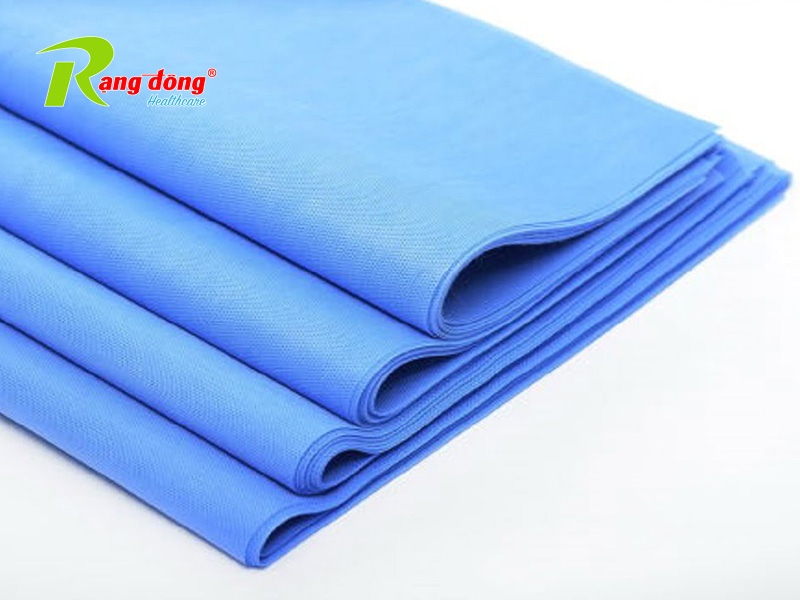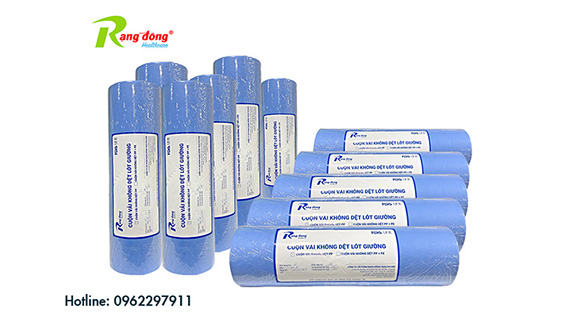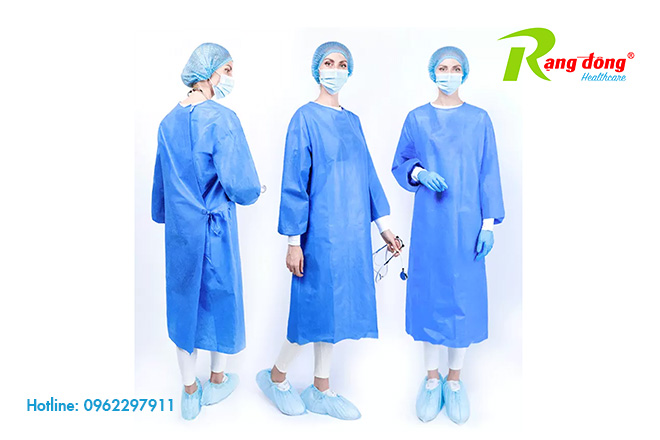Applications of non-woven fabric in the industrial sector Product information 29/04/2023
Enhancing competitiveness through technology and workforce. Rang Dong Healthcare Joint Stock Company has implemented Industry 4.0 technology in production to create the best products that meet international standards.

Instead of using woven or knitted structures to produce fabric, the non-woven fabric production process includes key steps such as fiber separation, layering, heat pressing, and using binding agents to keep the fabric fibers together. Depending on the materials and production processes used, non-woven fabric is widely used in various fields, including healthcare, industry, agriculture, sanitation, environmental protection, and everyday consumer products.
Reasons for the application of non-woven fabric in the industrial sector
Due to limitations in mechanical and physical properties, non-woven fabric fibers are bonded using chemical or mechanical bonding instead of cross-weaving fibers as in woven fabric. Therefore, non-woven fabric has lower durability and cannot be used in applications requiring high strength.

Furthermore, the non-woven fabric production process also requires more energy and production time compared to traditional woven fabric production processes. Therefore, non-woven fabric is often more expensive and less commonly used in everyday consumer products.
However, non-woven fabric is still applied in various fields, including the production of household goods, healthcare, food, and other industrial processing products.
Applications of non-woven fabric in the industrial sector
Rang Dong Healthcare Joint Stock Company aims to “for the community’s health” as its operational criterion and development foundation.
Environmental protection: Non-woven fabric is widely used in the industrial sector to produce various types of recyclable products, such as recycled bags, household items, and product packaging. It can be used to minimize waste and environmental pollution.

Water filtration and treatment: Non-woven fabric can be used to produce various filters, including water filters, air filters, and oil filters. It is also used in wastewater and industrial wastewater treatment.
Product packaging: Non-woven fabric is also widely used in product packaging in the industrial sector. It can be used to manufacture product packaging, bags, and garbage bags. Non-woven fabric can also be used to protect products and minimize damage during transportation.
Non-woven fabric has many applications in the industrial sector. Its unique properties have made it one of the most widely used materials in the industry and will continue to
Advantages and disadvantages of non-woven fabric in the industrial sector
Advantages:
- Flexibility and diversity: Non-woven fabric can be produced with different thicknesses, strengths, and permeabilities, suitable for various applications.
- Environmentally friendly: Non-woven fabric can be recycled and naturally decomposed, helping to minimize the impact of waste on the environment.
- Low production cost: The non-woven fabric production process is faster and simpler than woven fabric production, reducing production costs.
- Good water repellency: Non-woven fabric is often used in products that require waterproof properties, such as helmets, rainwear, bags, etc.
- Easy shaping: Non-woven fabric can be produced in various shapes and sizes, suitable for various applications.
Disadvantages:
- Poor durability: Non-woven fabric often has lower durability compared to woven fabric, making it unsuitable for high-strength applications.
- Non-reusability: Some types of non-woven fabric are not reusable, which can increase the amount of waste generated.
- Low resistance to wear and tear: Non-woven fabric can fade or tear easily when exposed to sunlight and other factors.
- Difficult quality control: The non-woven fabric production process is difficult to control the quality, especially for non_
Non-woven fabric plays a significant role in various industries, including
Textile industry: making clothing, household items, and other textile products. With features like durability, elasticity, absorbency, and breathability, non-woven fabric has become a popular choice in the textile industry.
- Medical sector: producing medical products such as medical masks, adhesive bandages, medical protective clothing, warm blankets, and many other medical items. Non-woven fabric can be made from synthetic fibers or natural fibers, depending on the specific application.
- Construction industry: serving as insulation and soundproofing material in the construction sector. With excellent waterproof and moisture-resistant properties, non-woven fabric is a useful option for making wall partitions and ceiling coverings.
- Agriculture: used as a protective cover for crops to shield them from pests and adverse weather conditions. It is also used in the production of soil bags and firewood wrapping.
Therefore, non-woven fabric plays a crucial role in various industries, offering many benefits to both people and the environment.
Continuing research and development is necessary to optimize applications and minimize environmental impact.

“The need for continued research and development to optimize applications and minimize environmental impact” is a statement addressing the search for solutions to improve efficiency and reduce the impact of applications on the environment. This requires research and development of new techniques, technologies, and processes to:
Optimize application performance: To maximize the performance of applications, research and development of solutions such as source code optimization, accelerated processing, system load reduction, and improved interaction with systems are necessary.
Sustainable resource utilization: To minimize the environmental impact of applications, sustainable resource utilization is essential. Optimizing production, utilization, and recycling of resources is one of the ways to reduce environmental impact.
Use of green technologies: Technologies designed to minimize environmental impact. Research and development of green technologies for use in applications is one way to reduce environmental impact.
Process development optimization: To minimize environmental impact, the development process for applications must be optimized. Optimizing the development process can reduce the time and energy required for application production.
Therefore, to optimize applications and minimize environmental impact, it is necessary to continue researching and developing solutions such as optimizing application performance, sustainable resource utilization…






